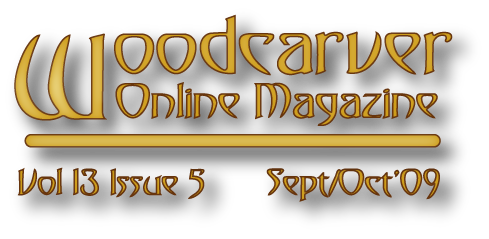
 |
Notes From The 'Net By Doug Evans, With Loren Woodard Howdy all !! It’s been awhile but lots of good stuff going on. In this issue we will talk about how many carvers have a business plan. Our editor-in-chief Matt Kelley posed this question and it stirred about some good discussion. Let’s cover some of the highlights. Matt asked: How many had a formal (note- formal) business plan, and if the carver responding was :
Our first response was from Byron Kinnaman who told us that he and his wife had used business plans in the past for freelance writing and a consulting service. Looking at retirement and income Byron stated that they would be developing a plan to include some carving income. He felt marketing was going to be his biggest problem. Pricing could/would be a challenge also as there is no agreed upon standard to work with. Shy little Joe Dillett gave a great summary on how he retired from electrical engineering and maintained his life style- plus when he went into the BUSINESS of woodcarving. Joe states that having a business plan was the key to his success. The plan helped him keep focused, maintain discipline and structure. Joe was active in teaching business plans for the SEA (Self Employment in the Arts). Key elements in a business plan are:
Steve Nordhauser added that he wouldn’t consider starting something without a rough business plan unless you intend to keep it as a hobby and don’t care about profits or costs. Steve gave a long laundry list of items to consider but here are just a few:
Ivan Whillock adds the fact that “artistic value” is in the eye of the beholder. Therefore, there is no hard and fast rules for pricing. You need to develop a “don’t insult me” rule as you price your carvings. As an artist , you don’t inherit a price value for your work but you create it through exposure and marketing. Ivan also recommends to purchase a book or two on the business of art. One he mentions is “This Business of Art” by Diane Cochrane Take care and God Bless !! Doug Evans
For information regarding the various email lists for woodcarvers, visit The Carvers' Companion Resource Files, or click the links below.
Editor's Note: Disclaimers and Cautions
|
Copyright 2009, All rights reserved. May not be reproduced in whole or in part without prior written permission. |